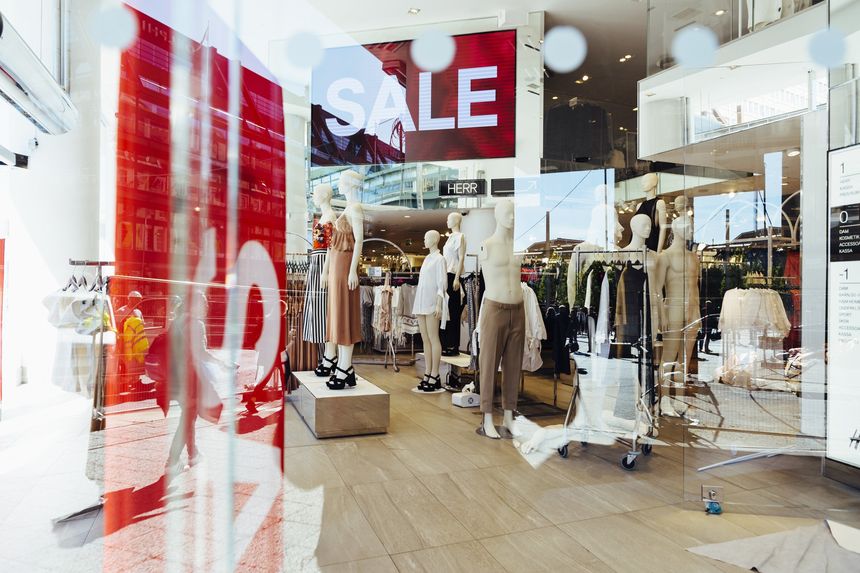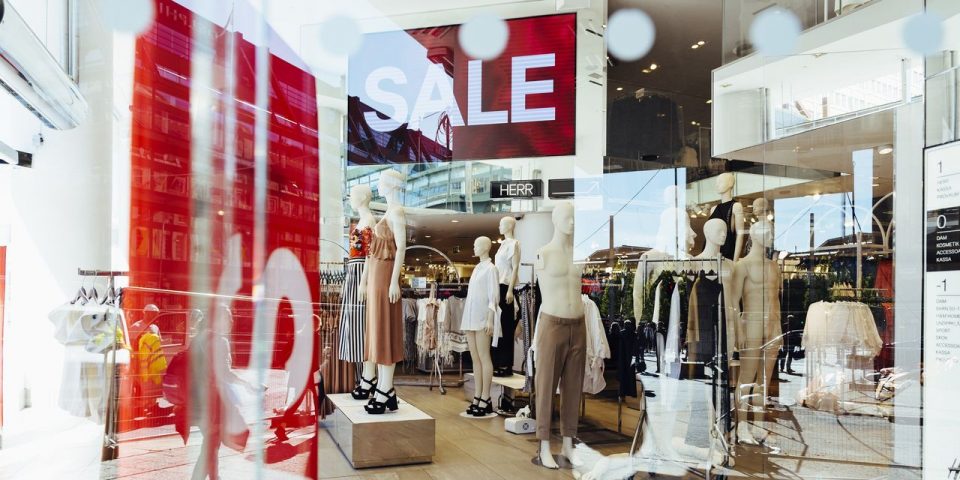
Sale signs hang inside an H&M store in Stockholm.
Photo:
Mikael Sjoberg/Bloomberg News
H&M’s
scanty profit shows the high price of investing for growth. Now, a costlier supply chain, weaker consumer demand and war in Ukraine all threaten returns on that cash.
Shares in the Swedish fast-fashion chain fell 10% in European morning trading after it reported a pretax profit for the three months through February that was less than half what analysts expected. After several years of spending heavily on e-commerce technology to catch up with Zara’s Spanish owner
H&M still needs to invest more in its supply chain and sustainability initiatives.
H&M’s long supply chains, which allow it to produce in low-cost Asian countries and ship goods to markets across the world, used to give it a competitive edge. But it is becoming less reliable and more expensive to run. Sea-freight contract rates for large shippers are around five times more expensive today than before the pandemic, according to data provider eeSea. The fashion brand is carrying more inventory than it would like until disruptions ease. H&M’s inventory-to-sales ratio was 19% in the quarter, a figure it wants to get down to 12% to 14% longer term.
H&M’s operating costs increased almost a fifth, partly due to technology investments that should help to link its website to the brand’s physical stores and other initiatives. And to meet its sustainability goals, H&M needs to invest in renewable energy and fabrics that are less harmful to the environment, such as recycled polyester, all of which pushes up production costs.
This would be more manageable if consumer spending were strong. However, after increasing sales 18% year-over-year in the three months through February, growth slowed to 6% in March. This may be an early sign that shoppers are cutting back on fashion purchases as inflation hits disposable incomes.
True, H&M stopped selling its goods in Russia, Belarus and Ukraine because of the war. Russia was one of the company’s fastest-growing markets and generated 4% of group sales. But sales slowed markedly in March even stripping out the conflict’s impact.
H&M wants to double revenues by 2030, which means growing by 10% to 15% a year. Demand in China still hasn’t recovered, a year after Chinese consumers boycotted the Swedish company for committing not to source cotton from Xinjiang. A weakening economy in Europe will make H&M’s expansion plans an even trickier fit.
Write to Carol Ryan at [email protected]
Copyright ©2022 Dow Jones & Company, Inc. All Rights Reserved. 87990cbe856818d5eddac44c7b1cdeb8
Appeared in the April 1, 2022, print edition as ‘H&M’s Latest Look With Weaker Profit Is Hard on Investors.’


